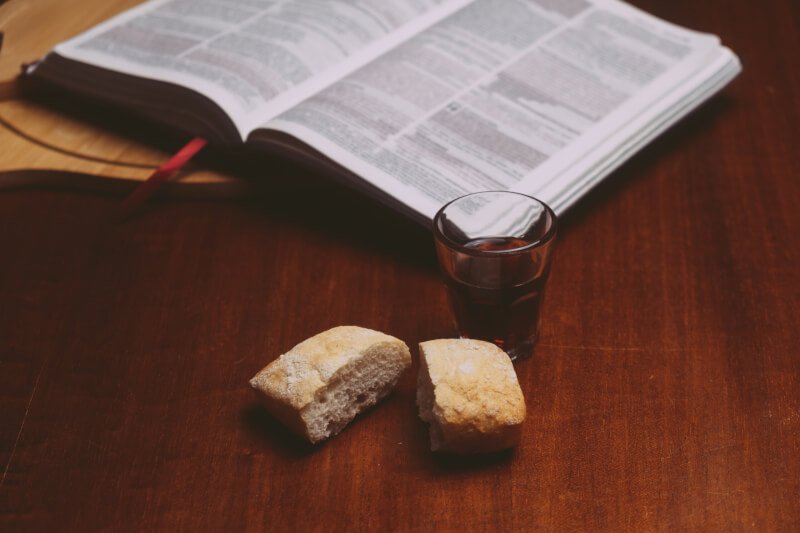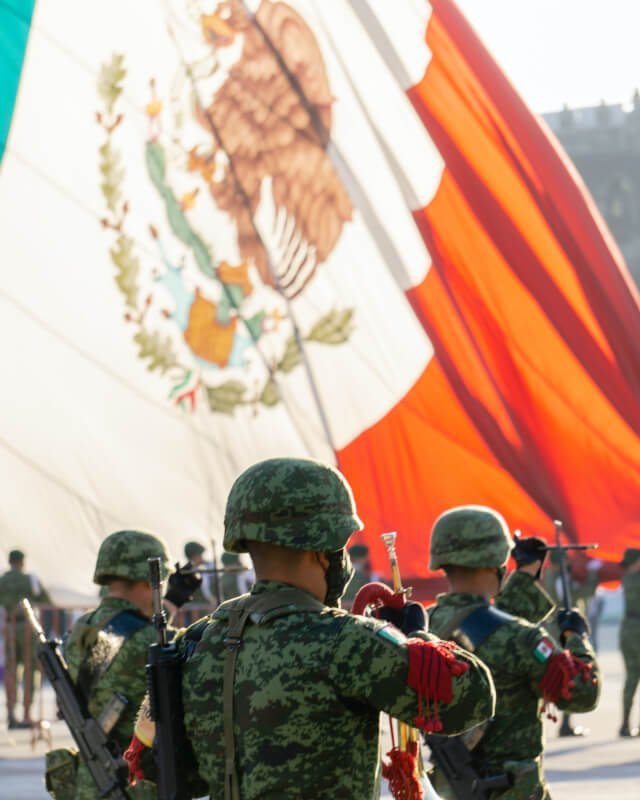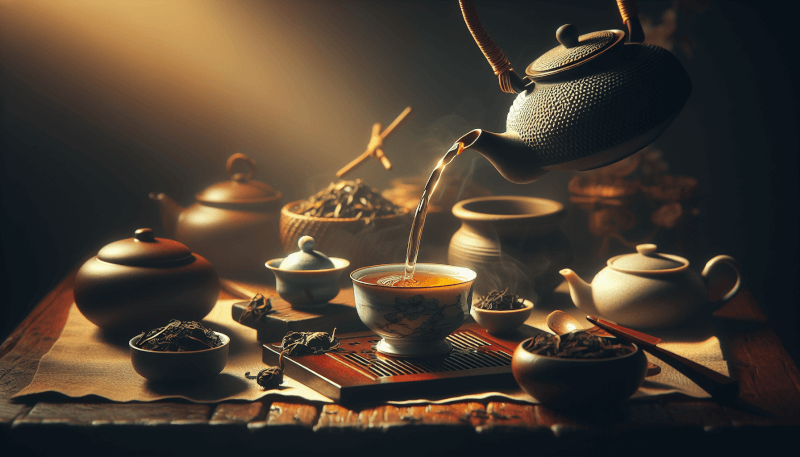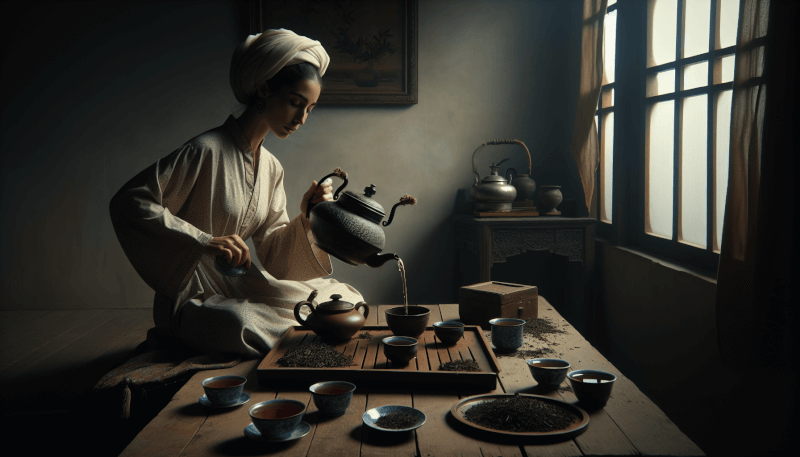Tea, a beloved beverage cherished by cultures worldwide, holds more than just a refreshing taste. Embedded within the act of brewing tea lies an intricate web of rituals that have evolved over centuries, each carrying its own significance. These rituals not only enhance the sensory experience of tea drinking but also serve as a reflection of cultural traditions and values. By exploring the role of tea brewing rituals in tea culture, we delve into the profound connection between humans and this ancient beverage, unraveling the layers of tradition and symbolism that make each cup of tea so much more than a simple brew. Tea has been an integral part of cultures around the world for centuries. As you delve into the rich world of tea, you will discover that it is not just a mere beverage, but a symbol of tradition, mindfulness, relaxation, social bonding, and even an art form. Tea brewing rituals play a crucial role in enhancing the tea experience and preserving the history and heritage associated with this drink. In this comprehensive article, we will explore the origins of tea, the significance of tea in various cultures, the evolution of tea brewing rituals, step-by-step brewing techniques, the meaning behind tea brewing gestures, and the health benefits of tea. So, sit back, relax, and immerse yourself in the delightful world of tea brewing rituals.
Origins of Tea
Tea has a fascinating history that dates back over 5,000 years to ancient China. Legend has it that Emperor Shen Nong discovered tea when tea leaves accidentally fell into his boiling water. He found the resulting beverage to be refreshing and invigorating, thus leading to the birth of tea. From there, tea cultivation spread across different regions, such as Japan, Morocco, India, England, and Russia, each developing their own unique tea brewing rituals.
Significance of Tea in Various Cultures
Tea holds a significant place in various cultures and is deeply rooted in traditions and rituals. In Chinese culture, tea is seen as a symbol of harmony and hospitality. The Japanese tea ceremony, known as Chanoyu, is a highly revered ritual that embodies simplicity, respect, and tranquility. In Morocco, tea preparation is a social activity, serving as a symbol of hospitality and friendship. In England, afternoon tea is a cherished tradition that celebrates elegance and refinement. In India, chai brewing is a daily ritual that brings people together and represents warmth and hospitality. And in Russia, the samovar tea tradition symbolizes gathering and sharing moments with loved ones. These diverse cultural traditions showcase how tea has become an inseparable part of people’s lives around the world.

Evolution of Tea Brewing Rituals
Tea brewing rituals have evolved over time, influenced by cultural practices, historical events, and personal preferences. In ancient times, tea was simply brewed by steeping tea leaves in hot water. However, as tea gained popularity, elaborate rituals and detailed processes began to emerge. These rituals were not only about preparing tea but also about creating an ambiance, promoting mindfulness, and fostering social connections. Throughout history, tea brewing rituals have adapted to changing times while still preserving their essence and significance.
Importance of Tea Brewing Rituals
Tea brewing rituals are not just a means of making tea; they serve a variety of purposes that contribute to the overall tea experience.
Firstly, tea brewing rituals help preserve tradition and cultural heritage. By following age-old brewing methods and using specific tea utensils, we pay homage to the rituals passed down through generations. This preservation ensures that the customs and values associated with the tea culture are not lost to time.
Furthermore, tea brewing rituals enhance the flavor and enjoyment of tea. The carefully measured tea leaves, water temperature, and steeping duration are all crucial factors in extracting the best flavors and aromas from the tea. By observing these rituals, you can truly savor the intricacies and nuances of different tea varieties.
Tea brewing rituals also promote mindfulness and relaxation. The deliberate and unhurried process of brewing tea encourages us to be present in the moment, appreciate the sensory pleasures, and find tranquility in the ritual itself. It becomes an opportunity to pause, reflect, and reconnect with ourselves.
In addition, tea brewing rituals facilitate social and cultural bonding. Whether it’s a tea ceremony, afternoon tea, or simply brewing tea for friends and family, these rituals bring people together, create a sense of community, and provide a shared experience. They foster conversations, build relationships, and leave lasting memories.
Lastly, tea brewing rituals celebrate tea as an art form. From the graceful movements of the tea master to the exquisite tea utensils, each element of the brewing process is considered an expression of beauty and craftsmanship. Tea ceremonies and rituals elevate tea from a ordinary drink to a form of artistic expression.

Types of Tea Brewing Rituals
Tea brewing rituals vary across cultures and regions, each with its own unique customs and traditions. Let’s explore some of the most renowned tea brewing rituals practiced around the world:
Chinese Gongfu Tea Ceremony
The Chinese Gongfu tea ceremony, also known as Gongfu Cha, is a traditional way of preparing tea that emphasizes precision, grace, and attention to detail. It involves multiple steepings of tea leaves in small clay teapots, using short infusion times and high tea-to-water ratios. This technique allows the flavors to fully develop, resulting in a highly aromatic and flavorful cup of tea.
Japanese Tea Ceremony
The Japanese tea ceremony, or Chanoyu, is a highly ritualized process that reflects harmony, respect, and Zen principles. It involves the preparation and serving of matcha, a finely ground powdered green tea. The ceremony is often held in a specially designed tea room called a chashitsu, and every movement, from the way the tea is whisked to the way it is served, is executed with precision and grace.
Moroccan Tea Preparation
Moroccan tea preparation is a vibrant and social affair. It typically involves steeping green tea leaves with fresh mint leaves and sugar in a teapot called a Moroccan teapot or a traditional tea kettle known as a berrad. The tea is poured from a height to create a frothy texture, and it is served in small glasses to guests, symbolizing hospitality and friendship.
British Afternoon Tea
Afternoon tea is a beloved British tradition that originated in the 19th century. It usually consists of a selection of teas, served alongside an assortment of finger sandwiches, scones with clotted cream and jam, and an array of pastries and sweets. Afternoon tea is often enjoyed in upscale hotels, tearooms, or even in one’s own home, providing an opportunity for relaxation and indulgence.
Indian Chai Brewing
Chai brewing is an integral part of daily life in India. Traditional Indian chai is made by simmering black tea leaves with milk, water, spices like cardamom, cinnamon, ginger, and sweetening agents such as sugar or honey. Chai brewing is a communal activity, as it brings families and communities together, serving as a symbol of warmth, hospitality, and togetherness.
Russian Samovar Tea Tradition
The Russian samovar tea tradition involves brewing tea with a samovar, a traditional metal container used for heating water. The samovar is filled with hot water, and tea leaves are placed in a separate teapot or an infuser, allowing the tea to steep slowly. The tea is then served in small glasses, often accompanied by traditional Russian sweets, pastries, or savory dishes.
Step-by-Step Tea Brewing Rituals
To truly appreciate the beauty and essence of tea brewing, it is essential to understand the step-by-step process involved. While the specifics may vary depending on the type of tea and cultural traditions, the following steps provide a general guide:
Selection of Tea Leaves or Bags: Choose the type of tea that suits your preferences, whether it’s green tea, black tea, oolong tea, or herbal infusions. Opt for high-quality loose tea leaves or tea bags to ensure a more authentic taste.
Boiling Water to the Appropriate Temperature: Different teas require different water temperatures for optimal brewing. Green teas generally require lower temperatures, while black teas and herbal infusions can tolerate hotter water. Follow the recommended temperature guidelines for the specific tea you are brewing.
Preparation of Tea Utensils: If following a traditional tea brewing ritual, ensure that your teaware, including teapots, cups, and utensils, are clean and ready for use. Some rituals may include pre-heating the teaware with hot water.
Measuring the Right Amount of Tea: Use a tea scoop or teaspoon to measure the appropriate amount of tea leaves, depending on the desired strength and the number of servings.
Pouring Hot Water over Tea Leaves: Gradually pour the hot water over the tea leaves, allowing the flavor to infuse into the water. Take care not to scald the tea leaves or use too little water, as this can impact the taste.
Allowing the Tea to Steep for the Right Duration: Follow the steeping time guidelines provided for the specific type of tea you are brewing. Steeping for too short a time may result in a weak flavor, while steeping for too long can lead to bitterness.
Pouring the Tea into Cups: Once the tea has steeped for the recommended time, carefully pour it into cups, straining out the tea leaves if necessary. Take care to pour a consistent amount into each cup to ensure equal strength and flavor distribution.
Appreciating the Aroma and Color of the Tea: Before sipping the tea, take a moment to appreciate its aroma and color. Observe the subtleties in both aspects and let them enhance your anticipation and enjoyment of the tea.
Sipping and Savoring the Tea: Finally, take a sip of the tea, allowing it to wash over your taste buds. Pay attention to the intricate flavors, mouthfeel, and aftertaste. Savor each sip and take the time to fully experience the tea’s nuances.

Meaning Behind Tea Brewing Gestures
Tea brewing gestures and techniques have meaningful symbolism and cultural significance. Each movement and action contributes to the overall ritual and adds depth to the tea experience.
Pouring Techniques and Their Symbolism
The way tea is poured in different rituals holds significance. For example, in the Chinese Gongfu tea ceremony, pouring water from a high distance is believed to enhance the mouthfeel and aroma of the tea. In the Japanese tea ceremony, a particular pouring technique called “hojiwari” ensures an equal distribution of the tea’s flavors among the guests.
Tea Serving Etiquette
Tea serving etiquette varies across cultures but generally follows principles of respect, hospitality, and mindfulness. Wait for guests to be seated before serving tea, handle teacups with care, and serve with a gracious and welcoming attitude.
Tea Utensils and Their Significance
Tea utensils, such as teapots, cups, and utensils, often hold symbolic meanings. They may be chosen for their aesthetic appeal, cultural significance, or historical value. For example, in the Japanese tea ceremony, the tea bowl is carefully selected based on its shape, color, and texture, and is often handed down through generations.
Artistic Movements in Tea Ceremonies
Tea ceremonies are often seen as a form of art, and the movements performed during these rituals are deliberate and graceful. Tea masters spend years mastering these movements, which include bowing, pouring tea, whisking matcha, and presenting the tea to guests. Each movement is precise and purposeful, elevating the tea ceremony to a performance of beauty and harmony.
Tea Brewing Rituals in Different Countries
Tea brewing rituals have distinct nuances in various countries. Let’s explore some cultural-specific tea brewing rituals:
China – Gongfu Tea Ceremony
The Gongfu tea ceremony in China is deeply steeped in tradition and artistry. With a focus on precision and mastery, this ritual involves multiple steepings of tea leaves, creating a rich aroma and deep flavor profile. The tea is poured into small cups and savored individually or shared among guests.
Japan – Chanoyu
The Japanese tea ceremony, also known as Chanoyu or Sado, is a highly revered cultural practice. It follows strict rules and aesthetics, emphasizing tranquility, simplicity, and respect. Matcha, a powdered green tea, is prepared and served to guests in a meticulously choreographed ritual performed by a trained host.
Morocco – Moroccan Tea Preparation
Moroccan tea preparation is known for its vibrant and theatrical aspects. Fresh mint leaves, green tea, and sugar are combined in a traditional Moroccan teapot known as a berrad. The tea is poured from a height into small glasses, creating a frothy texture. The tea’s aromatic flavors and the act of serving it symbolize hospitality and friendship.
England – Afternoon Tea
Afternoon tea is a quintessentially English tradition that emerged during the 19th century. It involves the serving of tea alongside delicate finger sandwiches, scones with clotted cream and jam, and an assortment of pastries and cakes. Afternoon tea is typically enjoyed in elegant tearooms or hotels, providing an opportunity to relax, socialize, and indulge in delectable treats.
India – Chai Brewing
Chai brewing is deeply rooted in Indian culture and is an integral part of daily life. The process of making chai involves brewing black tea leaves with spices like cardamom, cinnamon, and ginger, in a combination of milk and water. Chai is typically simmered slowly, allowing the flavors and aromas to infuse, resulting in a rich and comforting beverage.
Russia – Samovar Tea Tradition
The Russian samovar tea tradition is centered around the use of a samovar, a metal container used for heating water. A separate teapot or infuser is filled with tea leaves, and the samovar keeps the water hot for continuous brewing. The tea is served in small glasses and is often accompanied by traditional Russian sweets and pastries.

Modern Adaptations of Tea Brewing Rituals
While traditional tea brewing rituals hold immense cultural and historical significance, there has been an emergence of modern adaptations that combine contemporary elements with age-old customs. These adaptations aim to make tea brewing rituals more accessible, practical, and relevant in today’s fast-paced society.
Tea Ceremonies in Contemporary Settings
Tea ceremonies are no longer limited to dedicated tea houses or traditional settings. They are now being conducted in contemporary spaces like art galleries, cafes, and even private homes. This modern twist allows people to experience the beauty of tea rituals while also incorporating present-day aesthetics and comfort.
Blend of Traditional and Modern Elements
Some tea enthusiasts have begun blending traditional tea brewing rituals with modern techniques and flavors. This fusion approach acknowledges the importance of heritage while embracing innovation. For example, modern tea ceremonies may incorporate different tea varieties, unique infusions, or experimental brewing methods, all while respecting the core principles of the ritual.
Incorporation of Technology in Tea Brewing
Advancements in technology have also influenced tea brewing rituals. Electric kettles with precise temperature control simplify the process of heating water to the ideal temperature for different tea types. Tea infusion devices, such as automated tea makers or tea infusers, provide convenience without compromising on flavor. These technological adaptations cater to the busy lifestyles of the modern tea enthusiasts.
Tea Brewing Rituals and Health Benefits
Tea brewing rituals not only provide cultural and sensory pleasures but also contribute to various health benefits. The brewing techniques, along with the consumption of tea itself, can significantly impact the quality and effect of the tea.
Effects of Brewing Techniques on Tea Quality
The method and precision adopted in brewing tea can greatly affect its taste and flavor. The appropriate water temperature, steeping time, and tea-to-water ratio all play a role in extracting the desired characteristics from the tea leaves. Brewing techniques that adhere to specific guidelines ensure a well-balanced cup of tea, enhancing its overall quality.
Promotion of Mindfulness and Stress Reduction
Tea brewing rituals inherently promote a state of mindfulness and relaxation. The deliberate and unhurried process of brewing tea requires one’s full attention, allowing for a respite from the stresses of everyday life. Connecting with the rituals and being present in the moment can reduce stress, improve mental clarity, and cultivate a sense of calm.
Cultural Beliefs on Tea’s Healing Properties
Many cultures attribute healing properties to tea, based on traditional beliefs and herbal remedies. Certain types of tea, such as green tea, are associated with various health benefits, including antioxidant properties, improved digestion, and enhanced immune function. The ritual of brewing and consuming tea is often seen as a form of self-care and nourishment.

Rituals Beyond Tea Brewing
While tea brewing rituals lay the foundation of the tea experience, tea culture extends far beyond the act of brewing itself. Let’s explore some additional rituals and practices associated with tea:
Teaware Appreciation
Teaware, including teapots, cups, and utensils, is an integral part of tea culture. Tea enthusiasts often collect and appreciate teaware for its craftsmanship, aesthetics, and historical significance. This appreciation extends to the value placed on handmade pottery, delicate porcelain, or traditional clay teapots.
Tea Tasting Rituals
Tea tasting rituals involve the careful evaluation of tea samples to discern their aroma, taste, texture, and overall quality. These rituals may include inspecting the dry leaves, observing the brewed tea’s color and clarity, and sipping the tea to note its flavor profile. Tea tasting rituals help enthusiasts develop a deeper appreciation for the diversity of tea offerings.
Tea Storage and Preservation Practices
Proper tea storage and preservation practices play a vital role in maintaining tea’s freshness and flavor. Some tea enthusiasts follow specific rituals when storing tea, such as using airtight containers, keeping teas away from moisture or strong odors, and considering optimal temperature and light conditions. These practices ensure that the tea remains at its peak quality over time.
Preservation of Tea Brewing Rituals
Preservation of tea brewing rituals and traditions is of utmost importance to ensure their continuity and appreciation over generations. Efforts to safeguard these rituals involve multiple aspects, including education, the role of tea masters, and the promotion of tea culture.
Importance of Passing Down Traditions
Tea brewing rituals are usually passed down through generations, from tea masters to apprentices or family members. This oral tradition ensures that the knowledge, techniques, and cultural significance of the rituals are transmitted intact. It is essential to recognize the value of these rituals and actively preserve and share them.
Tea Masters and Their Role in Preservation
Tea masters play a crucial role in the preservation of tea brewing rituals. They are highly skilled individuals who have dedicated their lives to studying and mastering the complex art and cultural significance of tea ceremonies. By mentoring apprentices, hosting ceremonies, and sharing their knowledge, tea masters ensure that tea brewing rituals continue to thrive and evolve.
Promoting Tea Culture Through Education
Educational initiatives focused on tea brewing rituals are essential for creating awareness and appreciation among tea enthusiasts. Workshops, classes, and guided experiences allow individuals to understand the history, cultural significance, and brewing techniques behind different tea rituals. By promoting tea culture through education, we can ensure the survival and growth of tea traditions around the world.
In conclusion, tea brewing rituals are much more than a simple process of preparing tea – they are a gateway to a world of tradition, mindfulness, social bonding, and sensory exploration. As you embark on your tea journey, embrace the origins, diversity, and significance of tea brewing rituals across cultures. Whether you choose to perform a Chinese Gongfu tea ceremony, experience a Japanese tea ceremony, savor Moroccan tea, indulge in British afternoon tea, brew Indian chai, or partake in the Russian samovar tea tradition, each ritual offers a unique and enriching experience. So, raise your teacup, take a moment to appreciate the intricacies of tea brewing, and immerse yourself in the beautiful world of tea culture.

